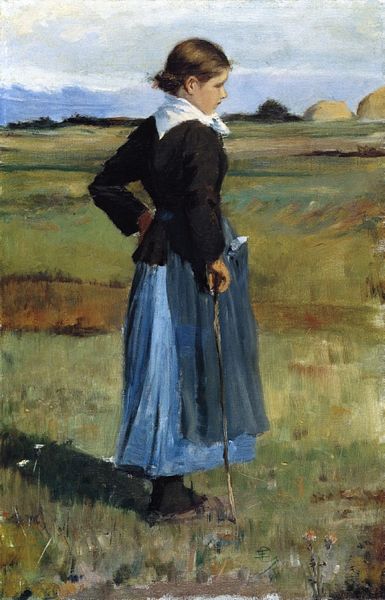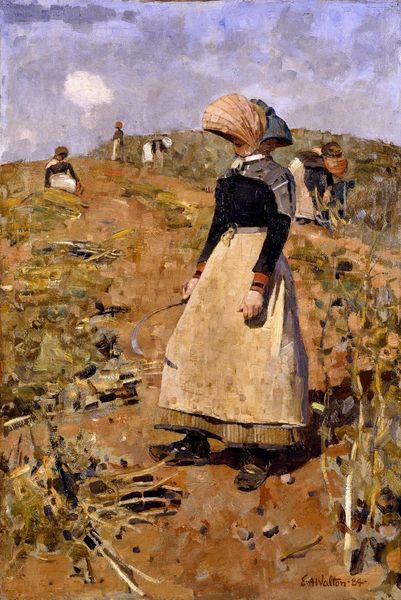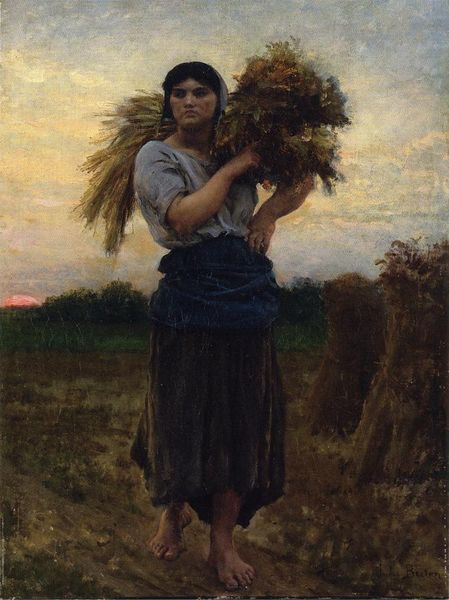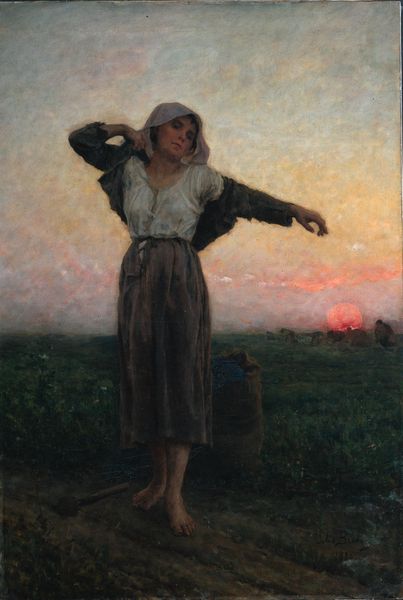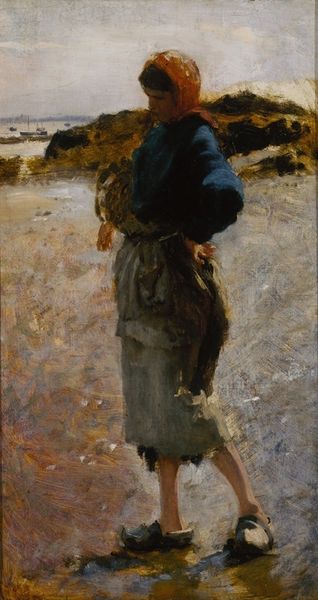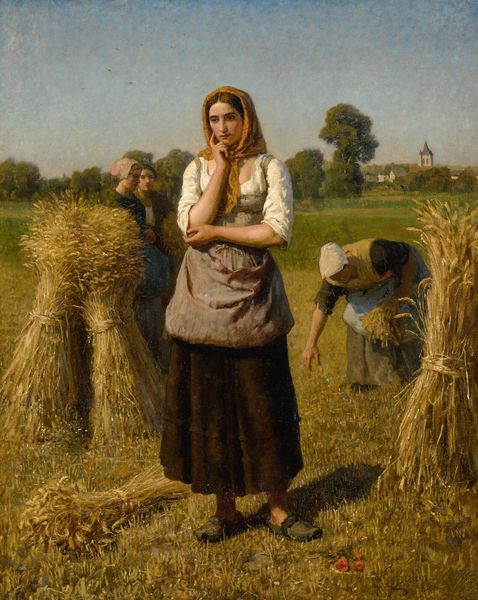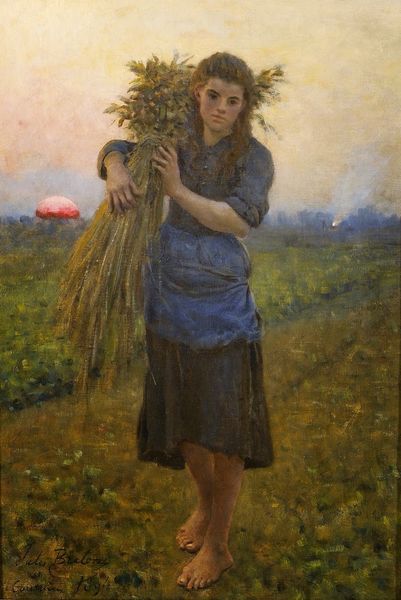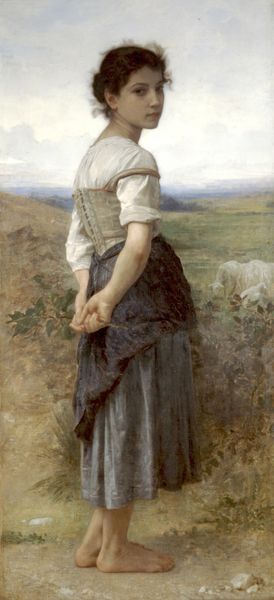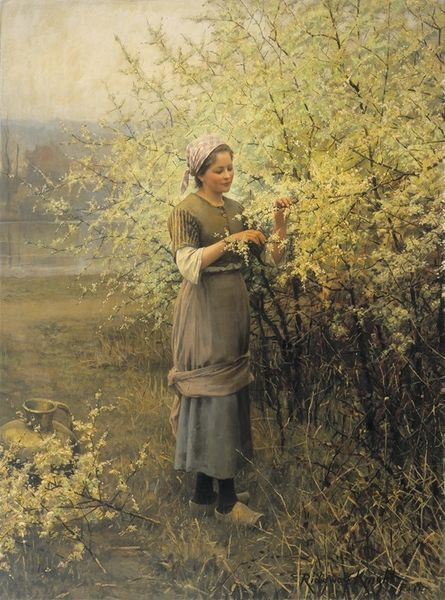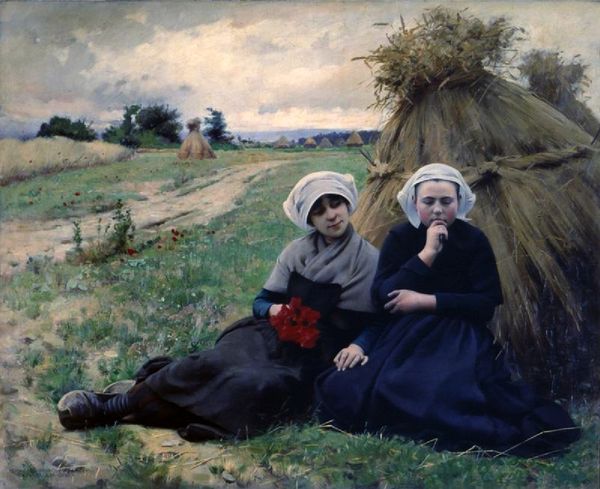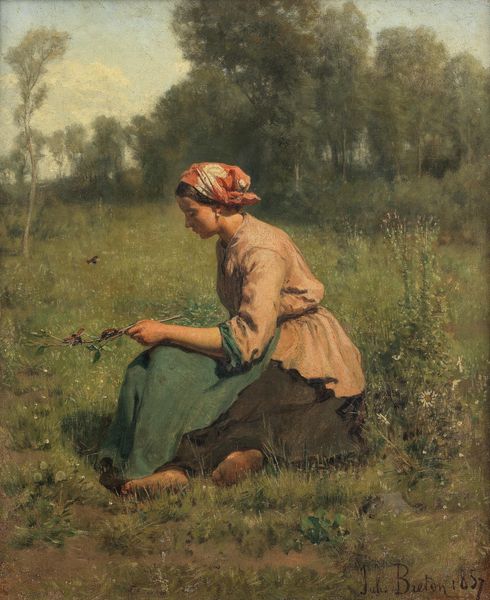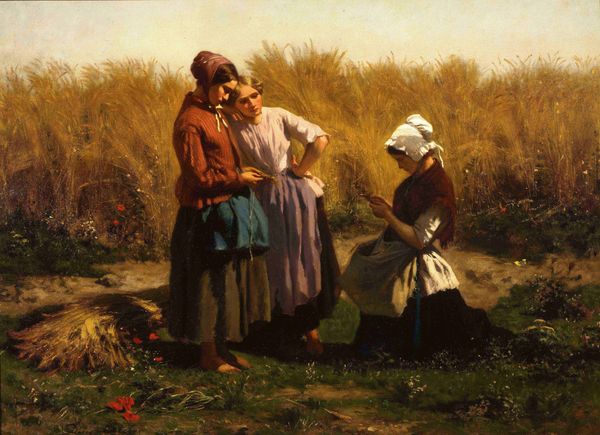
Dimensions: 15.7 x 12.6 cm
Copyright: Public domain
Editor: So, here we have Jules Breton’s "Young Woman in the Fields" from 1864, an oil painting depicting a woman amidst a harvested field. What strikes me most is the earthy quality, the tangible sense of labor ingrained in the landscape and figure. What do you see in this piece? Curator: The way Breton handles the oil paint is key. Look at the thick application in the foreground versus the smoother handling in the figure's clothing. He's deliberately highlighting the materiality of the earth she's standing on, and contrasting it with the textures of the textiles involved in rural production. The materials themselves, from the pigment derived from the earth to the woven cloth, tell a story of labor and production. Do you think this distinction elevates or degrades the rural worker? Editor: That’s a really interesting question. I guess initially I saw it as romanticizing rural life, but thinking about the way you framed it makes me wonder about the value, or lack thereof, placed on agricultural work. Curator: Precisely. And how does that value relate to consumption? This painting, ultimately, becomes a commodity itself. The very image of rural labor becomes something bought and sold, disconnected from the actual physical exertion and material conditions it represents. What does Breton, by selling this art, extract, appropriate, and sell? Editor: It seems he extracts the essence of that life, but repackages it without the associated hardships or material struggles. So, the buyer isn't purchasing a window into the real experience but more of an aestheticized version. Curator: Exactly. And think about the implications of plein-air painting; he brings industrial production (pre-mixed paints in tubes, portable easels) into the fields and converts field and figure into materials for consumption. Editor: I never considered it that way before, that Breton's artistic practice is part of the same material and consumption chain. It definitely adds another layer of complexity to how I understand the painting. Thanks! Curator: Absolutely! Looking at art through a material lens, understanding the who, how and from where opens doors to critical observation and deeper cultural understanding.
Comments
No comments
Be the first to comment and join the conversation on the ultimate creative platform.
